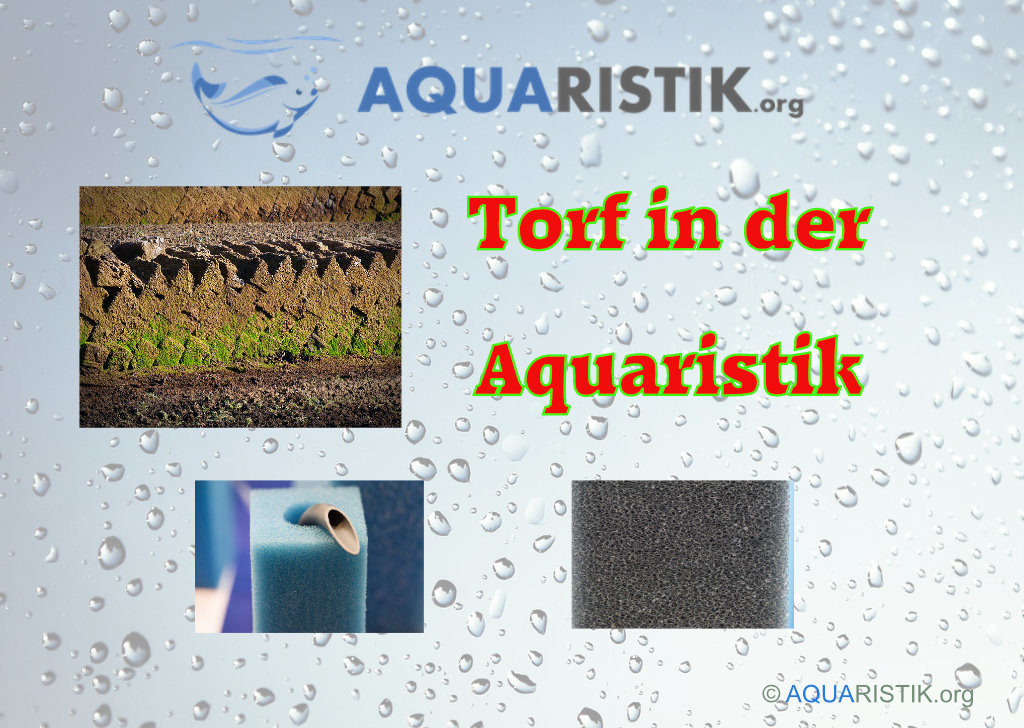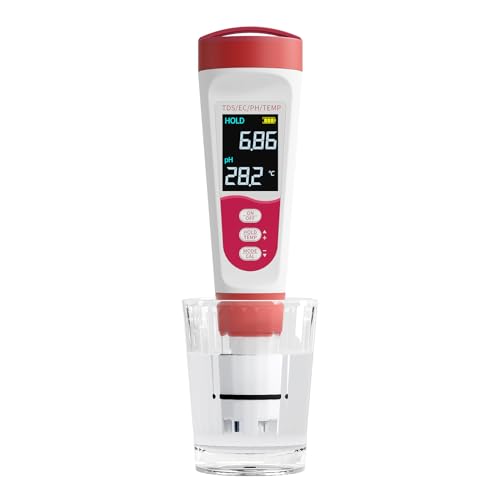Table of Contents

What actually is peat?
Let's start from the beginning, because most people think of peat as a kind of potting soil, which you can also find in hardware stores. But is this also the peat that comes into our aquarium?
Peat is actually created in mooren. Peat is created by plants. If these don't break down, they turn into peat. This is exactly what happens in a bog. Plant residues are not completely decomposed there and peat is therefore formed. Today, peat is not only mined from bogs (almost not at all anymore), but today peat is usually also extracted from industrial plants. Of course, there are also different types of peat. These are distinguished by their origin. The degree of density can also be decisive. However, we do not want to go much deeper into the biological and chemical formation of peat, because we are primarily interested in the importance of peat in aquaristics.
Peat in aquaristics
Of course, the beginner in particular will ask what peat is doing in aquaristics.
Peat has many advantages which can be used in the aquarium. You can find out what these are in the following. But first a few words about the general effect of peat. Basically, peat ensures that the cations are exchanged. This in turn causes the carbonate hardness is eliminated. This in turn presses on the Total hardness out of. Therefore this is also reduced. In addition, the included humic acid also the PH value lowered. The germ load in the water is also reduced. Various chemical processes are triggered by the addition of peat and there are entire treatises on them. But we don't want to get into chemistry too much here. The aim is usually to get the PH value in the acidic range below 7 and at the same time to reduce the hardness. One alone would not work.
Advantages of peat in aquaristics
Once you have understood that by adding peat (possible in various forms) you can lower and buffer the PH value and also influence the carbonate hardness as well as the overall hardness, because you will very quickly come to a decisive advantage . Many ornamental fish require according to their wanted posters acidic and soft water. Especially if you want to breed them. Be it tetra of all kinds or also the Scalar and the discus needs rather acidic water and a PH value of around 6. This is possible with the addition of peat.
Peat not only lowers these values, but also buffers them accordingly.
But that alone is not the only advantage of peat, because peat also has a germ-reducing effect. Again, this may be necessary if you want to breed fish. There, spawning fungus can be reduced and eliminated. Peat also has an antibacterial effect. You can always go to our guides to the fish diseases read that one should filter with peat after a drug treatment. However, filtering via activated carbon is better here. Both have their advantages. The antibacterial effect is thus used. Peat is also said to have an anti-fungal effect.
If you want to do something good for your fish, you can also do this with peat, because peat also protects the mucous membranes of the fish. This also increases well-being with peat (always apart from the respective fish species). In the relevant literature one also reads that peat has a good effect on plant growth. If you take this advantage, you could also say at the same time that the reduction in algae is possible. Good plant growth is often crucial to reduce algae as well.
As you can see, there are some advantages to filtering with peat. Let's summarize them again in bullet points:
- PH value can be lowered
- PH value is buffered and maintained
- GH value is lowered
- KH value is reduced
- Antifungal effect on fish and spawning in breeding
- Increases the body's defenses through its antibacterial effect
- Increases plant growth and thereby inhibits algae growth
Disadvantages of peat in aquaristics
Of course, as with almost anything, there are some Disadvantages. Above all, the optics of the aquarium must be mentioned here. The water in the aquarium can become very coloured. It usually turns yellow and brown. For many aquarists, this is a reason not to filter with peat. The water then takes on a color similar to that found in black water. The optimal condition for many fish. Unfortunately not for many aquarists because they want a clear and clean aquarium. Nevertheless, one should think about working with the natural substance peat. The advantages clearly outweigh the disadvantages.
However, this water turbidity can still be a disadvantage for light-sensitive plants, because they could not be supplied with sufficient light.
In addition, one can read again and again that peat increases the nitrate value and also the phosphate can bring value. You should therefore pay close attention to this when adding peat. Therefore, these values should always be measured accordingly. Let's summarize:
- Phosphate level may increase
- Nitrate levels may increase
- turbidity of the water
- Plants that are sensitive to light can experience growth problems
Peat, fiber peat, peat granules or peat boards
Peat comes in many forms. Be it in a fiber pot. You can easily use this in the filter or place it in the aquarium. There are even some fish that need exactly these pots to spawn.
In addition to the fiber pots, peat is also available as granules. This too has some advantages. Above all, the issue of suspended matter in the aquarium is reduced.
The fiber board has also been developed especially for easy placement in the aquarium. They can be cut to size and placed directly in the aquarium.
Of course, peat can also be used in its usual form, but you usually have to use a tool like a stocking.
Buy peat in the hardware store and garden center? Is there aquarium peat?
This question has reached us again and again. Where do I buy the peat at all or is it a special aquarium peat? Of course, manufacturers like heim, Sera, Tetra and Co have also come up with something and included a lot of different shapes and sizes of peat in their range. However, these expensive products do not necessarily have to be used. It can also be peat from the hardware store. But here you will only find the form of loose peat. You should also make sure that the peat is untreated and free of additives such as fertilizers and the like.
If the whole thing is too much for you, you should fall back on the well-known manufacturers. Here you also have the choice of different pots, granules and Co.
Peat filtering how do I do it?
Of course, one or the other is now wondering how peat is used in the aquarium at all. There are also various options for this. On the one hand, you can put the peat directly into the aquarium. This requires the peat slabs mentioned above or the peat pots.
However, it is recommended to use the peat outside of the aquarium. (Prevention of suspended solids and extreme coloring) There are various methods for this. The most widespread is probably the filtering over peat. There, either a finished peat insert is placed in the filter (external or internal filter) and the water then runs over the peat during the filter cycle. You can also read about putting peat in a woman's tights and then inserting it into the filter. This option has also proven itself over the years. You can also use loose and cheap peat from hardware stores and garden centers. You can of course also work with an extra container or filter tank. The peat is then used there, thus reducing the turbidity in the actual basin.
Regardless of which method you use, you should make sure that the circulation of the water through the peat is not too great, otherwise too much suspended matter can be carried away and then lie in the aquarium. This would entail even greater cloudiness. In addition, the effect of the peat is reduced.
How much peat do I need?
There is no general answer to this question, as many factors play a role here. Above all, the starting water is also crucial. If you work directly with reverse osmosis water, you will usually need less peat because the hardness has already been reduced.
How long does the peat last?
We cannot give a general answer to this question either. It all depends on the shape. For example, peat granules have the advantage that there are no or fewer suspended particles, but the effect is also much weaker there. The durability should also be lower. Some aquarists filter through peat for a very long time (up to months) without replacing it, while others replace the peat every 14 days. Ultimately, only control helps.
Determination and control of the PH value and the GH hardness
The best way to prove the effectiveness is to regularly check the PH value and the total hardness. The droplet tests are suitable for this, although you can get problems with the PH tests, since they work with a discoloration of the water. However, if the water is already colored, it is difficult to determine. An electronic PH value meter is better for this. You will have fewer problems with the overall hardness.
Based on these values, one should then also determine whether it is time to either reduce or replace the peat.
When do I need peat in the aquarium?
Finally, of course, the question has to be answered as to when peat is actually needed in aquaristics. If you have read the article completely, then this should already be clear. Basically, it always depends on which one ornamental fish you want to maintain, how the corresponding starting water from the water pipe is and what water values you want to achieve. Influencing the water values is usually the first priority, although peat is also used in the event of illness or for breeding purposes for reasons of its antifungal effect. In breeding, the main reasons are the spawning fungi.
As you can see, there can be many reasons why it is worth adding peat to the aquarium or using peat using the methods described above.
Are there alternatives to peat?
Yes there are. Even if not with natural substances. Peat is not always the best way to reduce the PH value or the hardness of the water. It can also make sense to work with osmosis water. A combination of osmosis and peat has also proven itself. Here we also want to on ours Guide to osmosis refer.










